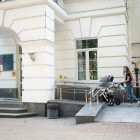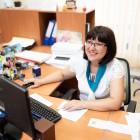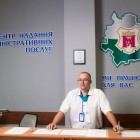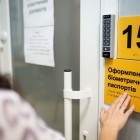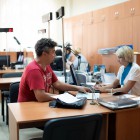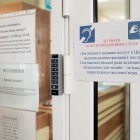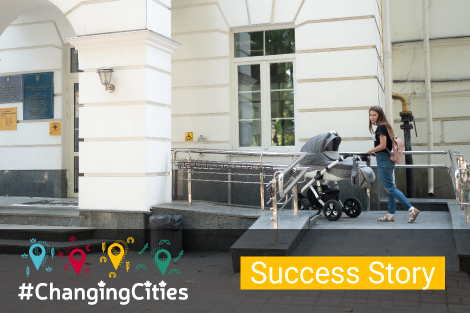 As part of the decentralization reform, Ukraine has already created near 800 administrative services centres (‘ASC’). One good example is the administrative services centre of Poltava City Council, which increased the number of services offered to clients 20 times, and the number of administrators 5 times over the past 7 years alone.
As part of the decentralization reform, Ukraine has already created near 800 administrative services centres (‘ASC’). One good example is the administrative services centre of Poltava City Council, which increased the number of services offered to clients 20 times, and the number of administrators 5 times over the past 7 years alone.

Since 2016, the administrative services centre has an electronic queue management system that allows visitors to see the time of their visit on big screens in a comfortable waiting area. It also uses an electronic system called ‘Services Datamart’, which means that handwritten applications are no longer required: the administrator uses a service code to print out the filled-out application, and the client merely signs it. For added convenience, the website of the Poltava administrative services centre offers the ‘Member Area’ functionality, which lets clients check the status of their application any time over the Internet. Meanwhile, clients receive SMS alerts once their application has been processed.
A number of particularly important upgrades have been implemented with the financial support of the PLEDDG Projectas part of the Democratic Governance and Development Initiatives Support Fund. The ASC has become even more comfortable for visitors owing to a number of innovations. First, in addition to the areas where documents are accepted and issued, there is now a front desk where friendly consultants offer full information on any matter. Second, safety deposit boxes have been installed for storage of biometric IDs. Third, particular attention was devoted to the inclusive environment of the premises in order to ensure equal access to administrative services and enable as many citizens as possible to exercise their rights. Caring for the health of visitors and staff alike, the administrative services centre installed an air recirculation system to purify and decontaminate indoor air. In addition, a diaper changing table has been installed in the restroom, and a children’s play area has been created in the waiting room. Children can now play or be creative while adults take care of business at the administrative services centre.

The administrative services centre has also recently become accessible to people with visual impairments: owing to the PLEDDG Project, the centre installed a Braille notice board. Nameplates in Braille are posted next to each office. For added convenience of visitors, there is a ramp at the entrance to the administrative services centre that can be used by people in wheelchairs and parents with strollers.
Administrative services centre administrators receive weekly training in new regulations that have taken effect. After all, possession of reliable information is the groundwork for providing quality services for the population. Administrative services centre staff attended trainings in stress management, effective communications and conflict resolution.

Since it is important for the administrative services centre to expertly process client feedback, visitors have been recently surveyed by PLEDDG in order to monitor the quality of services provided by the municipality. A total of 477 people were surveyed in 4 months. The results are encouraging: over 95% of those polled are absolutely satisfied with the way the electronic queue works, the informative nature of notice boards, the friendly and competent administrators. The following improvements were made to administrative services centre processes according to client suggestions: a terminal has been installed to simplify payment for services, which now lets visitors pay for services without leaving the premises. Work is in progress in response to another popular request, and soon preliminary registrations for the queue will be available via the website in addition to a self-service terminal.

The primary criterion for assessing the performance of administrative services centres is satisfaction of citizens and direct benefits or conveniences they receive. The primary component on the way to achieving high effectiveness is accessibility of the local authorities and their transparency in decision-making. This approach underlies each PLEDDG initiative, which is aimed at providing integrated assistance to local governments as they implement the ‘open effective governance’ model. Improvements to governance, budgeting and administrative services for the population go a long way in enabling the local authorities to not just respond promptly to the needs of the community and manage the available resources in a sustainable and transparent way but also to create favourable conditions for entrepreneurship and continued mobilization of investments in cities and regions.
| Download success story |




